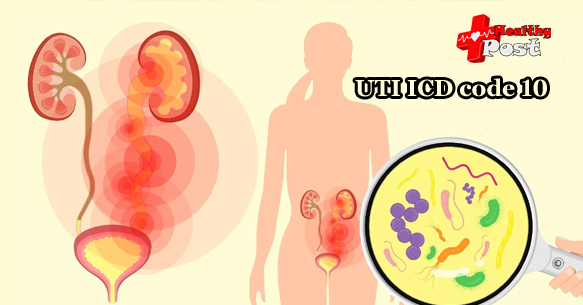
UTI ICD 10 Code: A Complete Guide for Accurate Medical Billing
Urinary Tract Infection (UTI) is a common health problem, especially in women. It affects parts of the urinary system such as the bladder, urethra, or kidneys. Most UTIs are caused by bacteria and can lead to pain, discomfort, and serious issues if untreated. Accurate medical billing is key in today’s healthcare system. Using the correct uti icd code 10 ensures smooth insurance claims. It also helps doctors and hospitals get paid properly and quickly. The uti icd code 10 is essential for tracking, treating, and reporting UTI cases.
Incorrect uti icd code 10 entries often result in denied claims and payment delays. Errors may also lead to problems in patient records and care. Many healthcare providers struggle with choosing the right uti icd code 10 due to confusing or outdated coding knowledge.
This guide will help you understand the correct uti icd code 10 to use for various UTI types. We will cover how coding affects billing and explore ways to avoid common mistakes. You’ll also find useful tools like tables and checklists to simplify your work.
Below is a quick comparison chart to show why the correct uti icd code 10 matters:
| Issue | Correct Coding | Incorrect Coding |
|---|---|---|
| Claim Approval Time | Fast | Slow or Rejected |
| Insurance Reimbursement | Full | Partial or Denied |
| Patient Record Accuracy | High | Low |
| Legal and Audit Risk | Low | High |
With this complete guide, you will master how to use the uti icd code 10 accurately. Let’s begin!
What Is an ICD-10 Code?
ICD-10 stands for the International Classification of Diseases, 10th Revision. It is a system used worldwide to code and classify diseases, symptoms, and medical procedures. Each ICD-10 code represents a specific diagnosis or condition. These codes are created and maintained by the World Health Organization (WHO).
In healthcare, ICD-10 codes play a big role. They help doctors, hospitals, and insurance companies understand patient diagnoses. The codes provide a standard language that ensures clear communication across the medical system. When a patient is diagnosed with a condition like a UTI, the healthcare provider must choose the correct uti icd code 10.
ICD-10 codes are also important for medical billing and insurance claims. They tell insurers why a patient received care. If the wrong code is used, the insurance company may deny payment. Accurate coding ensures providers get paid on time and patients receive the right care.
Using the correct uti icd code 10 is especially important for proper reimbursement. UTIs can vary by type, location, and severity. Choosing the most specific uti icd code 10 helps avoid billing errors. It also prevents claim rejections and reduces delays.
In short, ICD-10 codes help keep medical records clear and billing accurate. Mastering how to use them—especially the uti icd code 10—is key for every healthcare provider.
Common UTI ICD Code 10 Explained Clearly
Understanding the uti icd code 10 range is key for correct diagnosis and billing. UTIs affect different parts of the urinary system. Each type has a specific code under the ICD-10 system. Below are some of the most common uti icd code 10 entries used in medical billing.
N39.0 – Urinary Tract Infection, Site Not Specified
This is the most general uti icd code 10. It’s used when the exact site of the UTI is not identified. It is commonly used in emergency or initial visits when testing is still pending.
N30.00 – N30.9 – Cystitis (Bladder Infections)
These codes refer to infections in the bladder:
- N30.00 – Acute cystitis without hematuria
- N30.01 – Acute cystitis with hematuria
- N30.10 – Interstitial cystitis (chronic)
- N30.9 – Cystitis, unspecified
These codes help in identifying whether the cystitis is acute, chronic, or unspecified, which impacts treatment and billing.
N10 – N16 – Kidney Infections (Pyelonephritis)
These uti icd code 10 entries are for infections in the kidneys:
- N10 – Acute pyelonephritis
- N11.0 – N11.9 – Chronic pyelonephritis and other tubulo-interstitial nephritis
- N12 – Tubulo-interstitial nephritis, not specified as acute or chronic
Kidney infections require more intensive treatment, making correct coding crucial.
B96.20 – B96.29 – Bacterial Agents Causing UTIs
These codes identify the bacteria responsible for the UTI:
- B96.20 – Unspecified E. coli
- B96.21 – E. coli (uropathogenic)
- B96.29 – Other E. coli bacteria
These are often used alongside a primary diagnosis code like N39.0 to show the specific infection cause.
O23.40 – O23.93 – UTIs in Pregnancy
UTIs during pregnancy need special attention. These uti icd code 10 entries vary by trimester:
- O23.40 – Unspecified trimester
- O23.42 – Second trimester
- O23.93 – Third trimester, unspecified infection
Using the right code helps track pregnancy complications and ensures proper care.
UTI ICD Code 10 Comparison Table
| ICD-10 Code | Description | Use Case |
|---|---|---|
| N39.0 | UTI, site not specified | General diagnosis |
| N30.00–N30.9 | Cystitis (Bladder infection) | Lower UTI |
| N10–N16 | Kidney infections (Pyelonephritis) | Upper UTI |
| B96.20–B96.29 | Bacteria causing UTI | Identify infection agent |
| O23.40–O23.93 | UTIs in pregnancy | UTI during pregnancy by trimester |
Correct use of the uti icd code 10 ensures accuracy in treatment and billing. Always match the code to the UTI type.

How to Choose the Right UTI ICD Code 10
Selecting the correct uti icd code 10 is crucial for accurate diagnosis, treatment, and billing. Several factors must be considered when choosing the appropriate code. These include the location of the infection, the cause, and any complications present.
Key Factors in UTI ICD-10 Code Selection
- Location of Infection:
- Lower urinary tract (e.g., bladder) uses codes like N30.00.
- Upper urinary tract (e.g., kidneys) uses codes like N10.
- Cause of Infection:
- If lab results identify a bacterial cause, an additional code like B96.20 may be needed.
- Use this alongside the main uti icd code 10.
- Complications or Conditions:
- For UTIs during pregnancy, use codes from O23.40–O23.93 based on trimester.
- If the infection is chronic or recurrent, more specific codes apply.
Unspecified vs. Specified Codes
- N39.0 is used when the UTI location is unknown or not yet diagnosed.
Example: A patient presents with UTI symptoms, but tests are pending. - N30.00 or N10 are specified codes. Use them when the diagnosis confirms cystitis or kidney infection.
These provide more detail for better treatment and billing.
When to Use Additional Bacterial Codes (B96.2-)
- Use codes like B96.21 (E. coli as cause) when lab results identify bacteria.
- These codes help insurers understand the specific cause of the UTI.
- Always pair bacterial codes with a primary diagnosis like N39.0 or N30.00.
Examples of Correct Coding
- General UTI, no site specified
- Code: N39.0
- Acute cystitis with hematuria
- Code: N30.01
- Kidney infection caused by E. coli
- Codes: N10 + B96.21
- UTI in second trimester of pregnancy
- Code: O23.42
By carefully reviewing symptoms, lab reports, and patient history, healthcare providers can choose the most accurate uti icd code 10. This ensures precise billing and better care outcomes.
Common Mistakes in UTI ICD Code 10 Coding
Accurate use of the uti icd code 10 is essential for proper billing and care. However, many healthcare providers make avoidable mistakes that can lead to denied claims or incorrect treatment.
1. Using Unspecified Codes Unnecessarily
The code N39.0 (UTI, site not specified) is often overused. This should only be used when the infection site is truly unknown. If tests confirm the infection is in the bladder or kidneys, a more specific uti icd code 10 like N30.00 or N10 should be used instead. Specific codes improve documentation and reimbursement accuracy.
2. Missing Secondary Codes for Bacterial Causes
Another common mistake is failing to include bacterial cause codes such as B96.21 (E. coli). When lab results identify a bacteria, these codes should always be added alongside the primary uti icd code 10. Omitting them may result in incomplete records and affect treatment decisions.
3. Confusing Cystitis (N30.-) with Urethritis (N34.-)
Cystitis and urethritis are both urinary infections but affect different parts of the system. N30.- is used for bladder infections, while N34.- is used for urethral infections. Using the wrong code can mislead payers and result in wrong treatments.
4. Incorrect Coding for Recurrent or Complicated UTIs
Providers often miss when a UTI is recurrent or linked to other conditions. These cases may require more specific codes or documentation of chronic conditions. Using only basic uti icd code 10 entries like N39.0 can result in claim denials or reduced reimbursement.
To avoid these errors, always review patient records, lab results, and medical history before selecting a uti icd code 10. Accuracy ensures better care and smooth billing.
Impact of Incorrect UTI ICD Code 10 on Medical Billing
Using the wrong uti icd code 10 can create serious issues in medical billing. These errors can delay payments, trigger audits, and cost healthcare providers money.
Denied or Delayed Insurance Claims
Insurance companies require accurate codes to process claims. If the uti icd code 10 is incorrect or incomplete, the claim may be denied. This delays reimbursement and forces staff to resubmit claims, wasting time and resources.
Compliance Risks and Audits
Incorrect coding can also raise red flags during audits. Repeated use of unspecified codes like N39.0, when detailed information is available, may signal poor coding practices. This puts the provider at risk for penalties or audits by Medicare or private insurers.
Financial Losses for Providers
Billing errors due to wrong uti icd code 10 entries can lead to lost income. Rejected claims, undercoding, or misdiagnosed infections may reduce the amount paid or result in no payment at all. Over time, this impacts the provider’s financial health.
How to Avoid UTI ICD-10 Coding Errors
- Always review lab results and diagnoses.
- Use specific uti icd code 10 entries whenever possible.
- Add secondary codes like B96.21 for bacterial causes.
- Train coding staff regularly on updates and changes.
Accurate use of the uti icd code 10 is not just about billing—it ensures proper care and keeps your practice compliant.
Best Practices for Accurate UTI ICD Code 10 Coding
To ensure proper billing and care, it’s vital to apply the uti icd code 10 correctly. Following best practices helps prevent errors, delays, and claim rejections.
1. Always Document the Infection Site
Never use N39.0 unless the site is truly unknown. If the UTI affects the bladder, use a code from the N30.00–N30.9 range for cystitis. For kidney infections, use codes like N10 for acute pyelonephritis. For urethritis, use N34.-. Specific documentation leads to accurate coding and better outcomes.
2. Specify if the UTI Is Recurrent or Complicated
If the patient has multiple UTIs, mention if the case is recurrent or linked to underlying conditions like diabetes or pregnancy. Use relevant uti icd code 10 extensions or additional codes to show these factors. For example, use O23.4- codes for UTIs in pregnant women, depending on the trimester.
3. Use Additional Codes for Causative Organisms
When lab tests identify bacteria (e.g., E. coli), include secondary codes like B96.21. Pair them with a primary uti icd code 10 such as N10 or N30.00. This offers more clarity and supports proper treatment plans.
4. Provide Regular Training for Coders
Medical coding guidelines are updated regularly. Train your billing team to stay current with uti icd code 10 rules and changes. This reduces errors and improves claim approval rates.
Following these best practices ensures more accurate use of the uti icd code 10, smoother billing processes, and better patient documentation.
FAQs on UTI ICD Code 10
What is the most common UTI ICD-10 code?
The most commonly used uti icd code 10 is N39.0, which stands for “urinary tract infection, site not specified.” It’s often used when the infection’s location hasn’t been confirmed yet.
How do I code a UTI with no specified location?
If the provider doesn’t specify where the infection is located (bladder, kidney, or urethra), use N39.0. However, this code should be a last resort. Always try to gather more information for a more specific uti icd code 10.
When should I use a separate code for bacteria?
If lab results identify a bacterial cause, such as E. coli, you must use an additional code like B96.21. This is added alongside the main uti icd code 10 (e.g., N30.00 or N10). It helps support accurate diagnosis and reimbursement.
Are there different codes for male vs. female UTIs?
In most cases, the same uti icd code 10 applies to both males and females. However, if the UTI occurs during pregnancy, use codes from the O23.4- series, depending on the trimester. Always review the patient’s full clinical context.
These FAQs aim to help you use the correct uti icd code 10 efficiently and confidently for accurate medical billing and reporting.
Conclusion: Mastering the Use of UTI ICD Code 10
Accurate use of the uti icd code 10 is essential for correct diagnosis, smooth billing, and better patient care. Coding errors can lead to denied claims, lost revenue, and compliance issues. That’s why precise documentation and proper code selection matter.
Always record the infection site—whether it’s the bladder, kidney, or urethra. Use specific codes like N30.00 or N10 instead of N39.0, whenever possible. Don’t forget to add secondary codes like B96.21 if a causative organism is identified.
Regular training and updates for your coding team ensure accuracy and keep your practice audit-ready. Accurate use of uti icd code 10 not only speeds up reimbursements but also improves communication between providers and insurers.
Final Tip: Review patient records thoroughly and stay informed on coding updates. When in doubt, consult a certified medical coder to avoid mistakes.
Proper use of the uti icd code 10 protects your practice from claim issues and ensures patients get the care they need—backed by clean and complete documentation.

